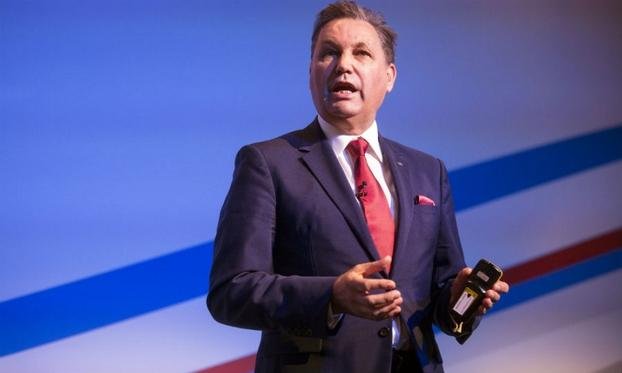Most Russian Car Plants are Uncompetitive, AvtoVAZ CEO Says

Among the plants Andersson says are not producing enough to make money are Ford and its local partner Soller’s three factories in the country as well as General Motors’ two factories.
“I would say only 5 [out of the country’s 15 car plants] are sustainable, and they are the ones with production volumes over 175,000,” he told the Automotive News Europe Congress here on Wednesday. Vehicle assembly plants in Europe generally have a capacity to build 200,000 to 400,000 vehicles a year, he said.
GM said in March that it will stop car output at its St. Petersburg factory and end a production agreement with Russia’s GAZ Group, which makes the Chevrolet Aveo in Nizhny Novgorod. GM also is ending sales of mainstream Chevrolet cars and all Opel models in Russia, where sanctions over the conflict with Ukraine have weakened the economy, causing car sales to slump.
Through May vehicle sales in Russia were down 38 percent to 641,933 while GM’s volume was down 70 percent to 25,776 during the same period, according to figures from the Moscow-based Association of European Businesses in Russia.
When Andersson, GM's former global purchasing boss, was asked whether others will follow GM out of Russia he said: “What the rest of the people will do I don’t know. I have enough of my own problems.”
Andersson told the Congress he expected full-year Russian sales to decline by 36 percent this year and forecast that it would take eight years for the market to return to the level seen in 2012, when the total volume was 2.9 million cars and light commercial vehicles, according to AEB data.
The Russian market’s collapse has been a setback for Renault-Nissan, which owns a 51 percent stake in the joint venture that controls AvtoVAZ. Andersson took charge of the Lada maker in 2014 with a mandate from Renault-Nissan CEO Carlos Ghosn to make company more efficient and profitable. Reaching those targets has been difficult as Russia’s inflation jumped to a 13-year high in March and the ruble lost about half its value against the dollar last year.
Chevy dealers
But it’s not all bad news. Andersson said AvtoVAZ has benefitted from the crisis in several ways. For example, Chevrolet and Opel dealers are signing up with AvtoVAZ, which is helping to boost Lada’s market share.
“Last year we were having a hard time getting new dealers,” he said. “Now everyone wants to be a Lada dealer. We've added 16 dealers, some of them were former Chevy and Opel dealers.”
He said AvtoVAZ is on track for a 3 percent operating profit this year, after a 3 percent operating loss last year, and that its target of a 6 percent operating profit is reachable “if everything works out.”
Product is a key part of Andersson’s revival plan. He said the new Lada Vesta sedan will go on sale in September. The Vesta will comply with EU safety and emission standards and start at the equivalent of 8,000 euros, Andersson said, adding that Lada will start production of the XRay crossover in December.
The arrival of those models makes Andersson bullish about AvtoVAZ’s future. “I am optimistic about the outlook in Russia,” he said. “At the exchange rate of 75 rubles to the euro, most people will not make money. I am optimistic we will make money.”
Short list
Location and production of the plants in Russia AvtoVAZ CEO Bo Andersson says are sustainable
Related News


